Clean lines: Tate Modern hosts Agnes Martin's skillful art of essentiality

Tiny flecks of dust, nibs of paint or protruding knots in the weave of a canvas catch your eye as you follow the smooth, unerring lines of Agnes Martin across her painterly plains of colour. Something of an outsider, Martin grew up in Saskatchewan, Canada and only graduated from art school aged 40. She then retreated to Taos, New Mexico to paint and teach art, although Georgia O'Keefe, Mark Rothko and others had already found spiritual homes in the area.
The temptation is still to see aerial landscapes, parched fields and horizons in her early works, titled 'Beach' (1958) or 'Harbor' (1957). Yet anything resembling a tree or a sunset was very quickly replaced by simple grids of hand-ruled pencil lines and bands of pastel-pale reds, blues and yellows. There are still traces of never-ending fields and powerlines, earthy tans, taupes, khakis and ochres, but Martin went on to claim that her contemplative works were actually 'anti-nature'. Indeed, later pictures in Tate Modern's superb retrospective resemble nothing more than grey concrete slabs or grids of skyscraping windowpanes.
Martin was 'discovered' by a gallery owner in 1957 and encouraged to move to New York, where she straddled the still dominant school of Abstract Expressionism (she was the same age as Jackson Pollock) and the early seedlings of Minimalism, another boys-only club that she felt even less kinship with. In 1967 she quit the art world for an extended road-trip, ending up back in the desert in an adobe mud hut she built for herself. But making claims of unadulterated artistic naivety or isolated genius on her behalf just don't wash, if you will excuse the pun. Neither are these tasteful, abstract wall-fillers (although her prices are through the roof).
Martin was skilled, calculating - destroying many works she deemed below par - and often bold in her painterly constructions, as can be seen in the magnificent, crowning room of The Islands I-XII (1979), an immense series of blindingly brilliant, off-white harmonies stretching off into infinity. Elegant and tough, sure, but never effortless or easy on the eye, Martin's soft-edge abstractions and too-watery paintings still seem fresh 50 years on.
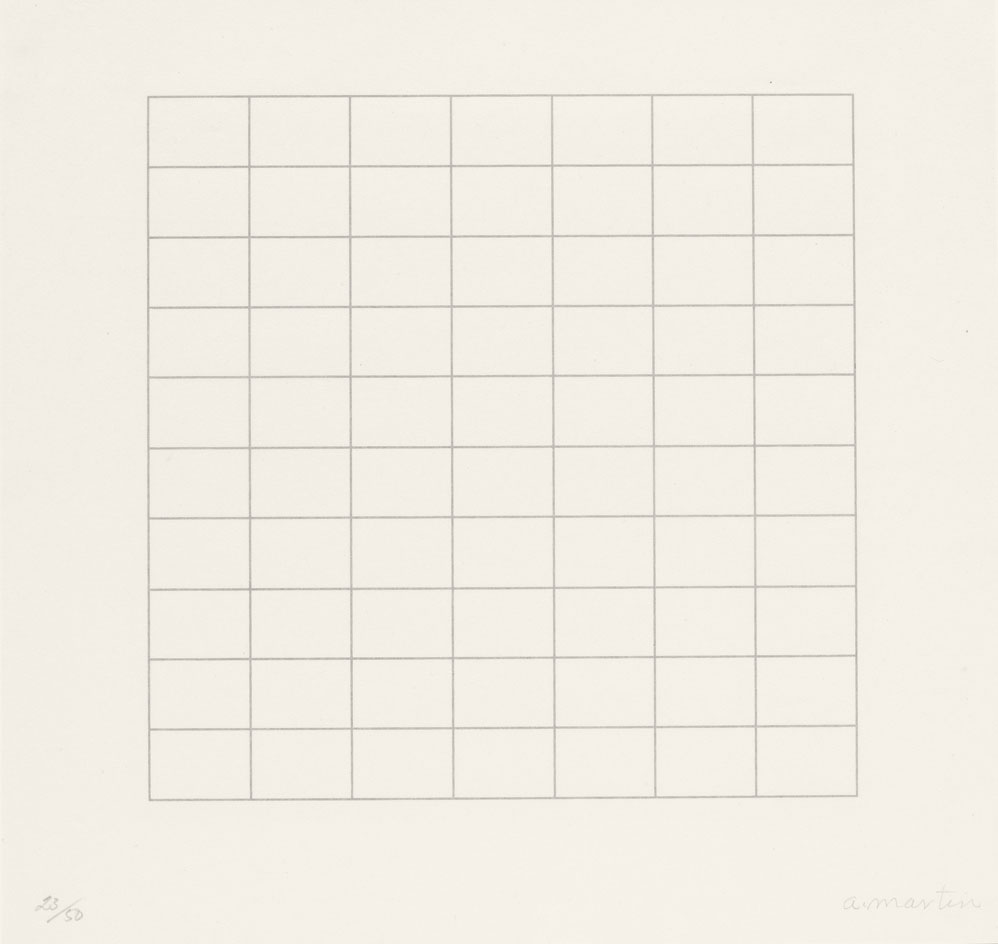
'On a Clear Day' (1973)'s title resonates with the light beige background given to the abstract work. The geometrical cubic repetition further emphasises this clarity, as the thin dark lines defining them creates negative space.
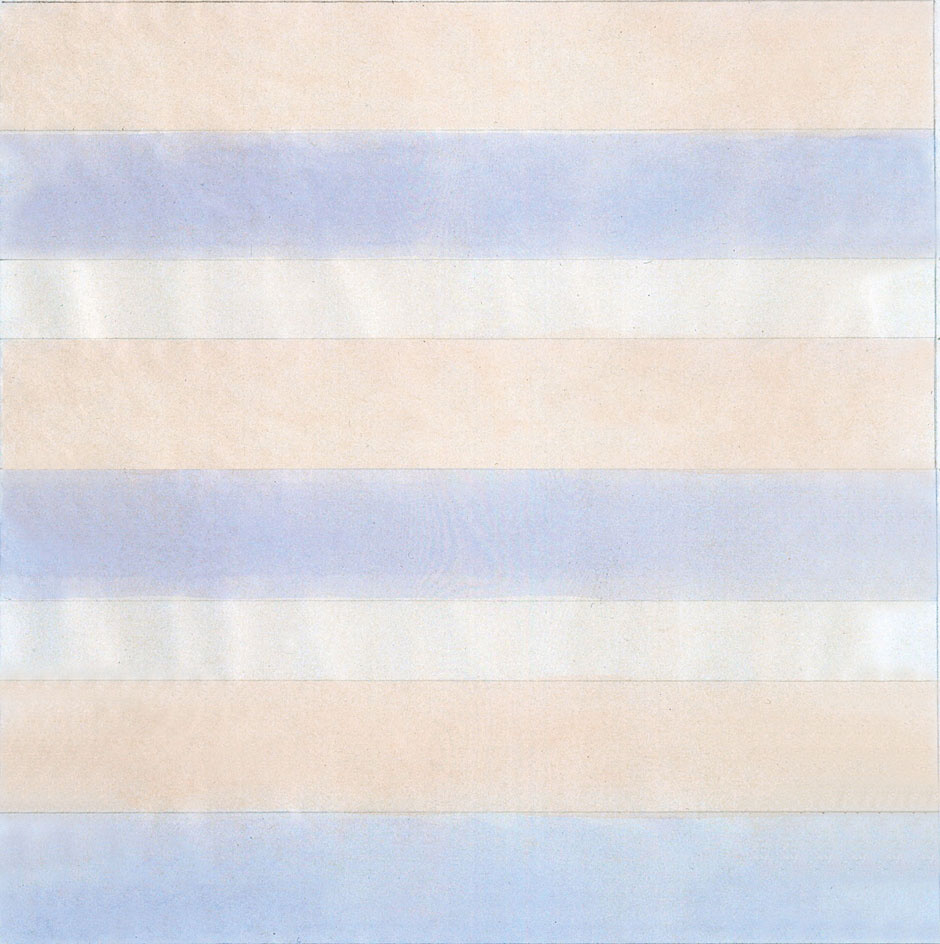
'Untitled 1977' highlights the use of both pencil and paint in Martin's work, as the pastel-coloured planes are firmly delineated by thin pencil-lines.
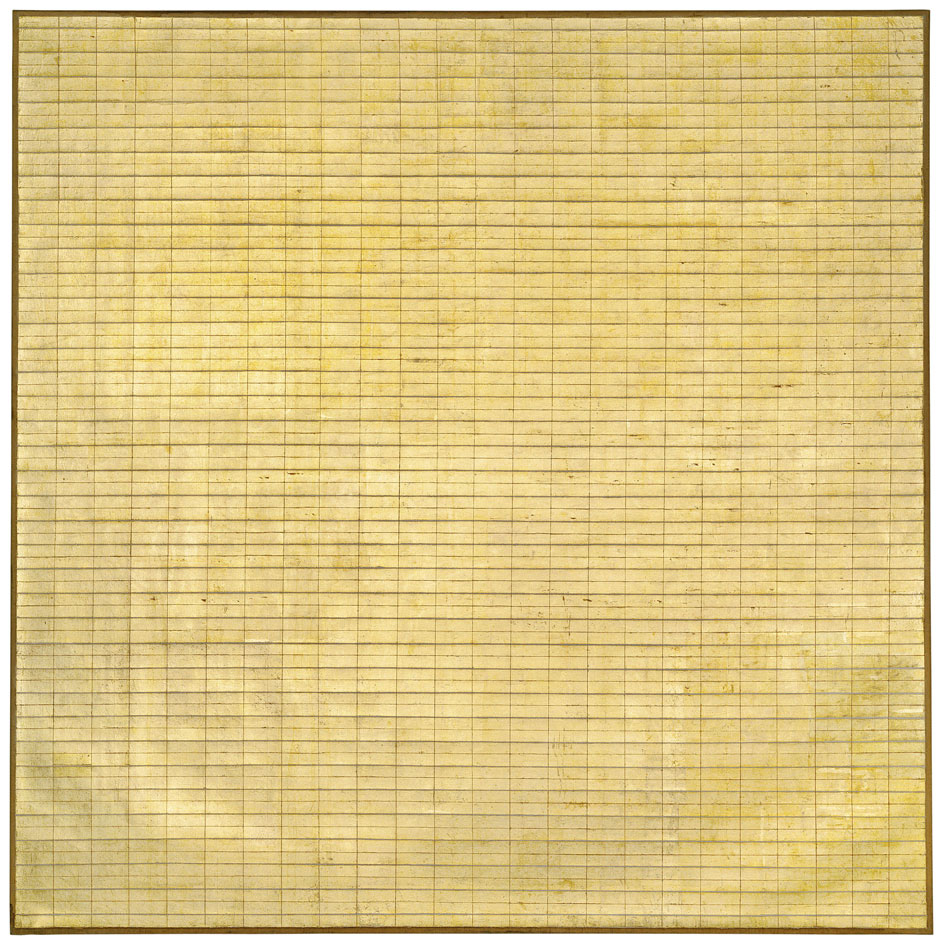
Friendship (1963) represents rigorous geometrical repetition on a yellowish background. Perhaps this abstract image echoes precisely the meaning Martin attributes to friendship: an elongated form of continuity.
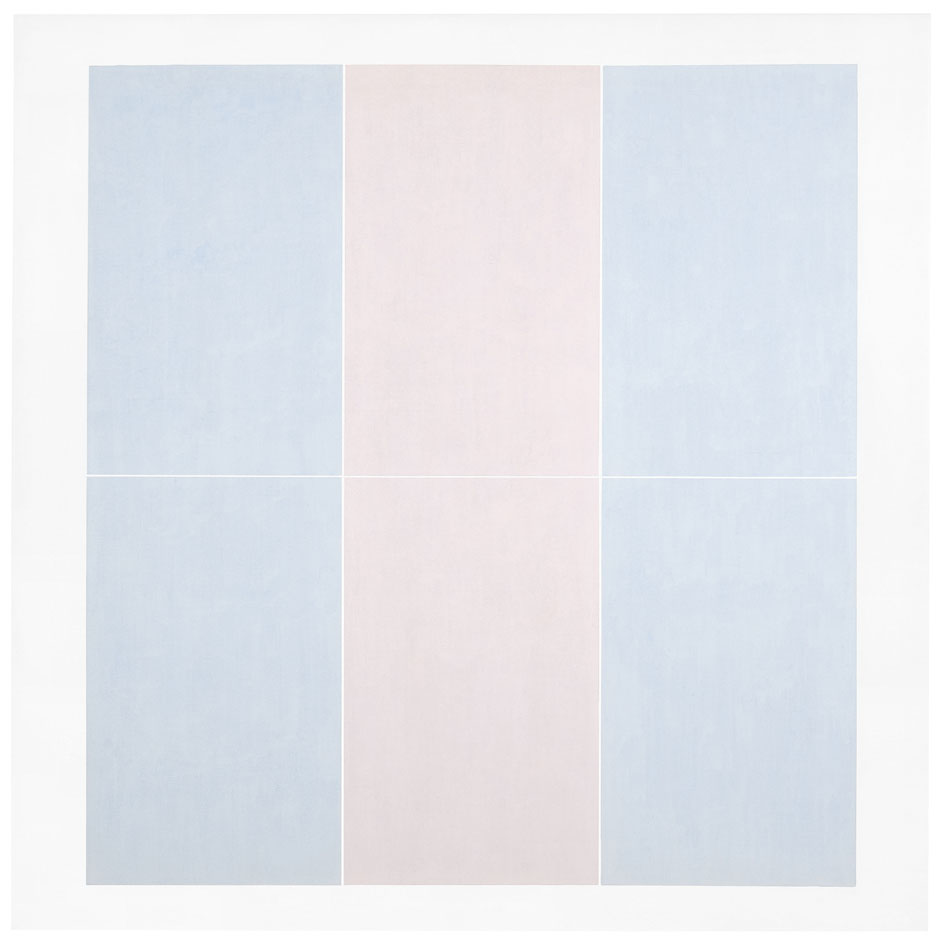
This Untitled painting from 1974 unites six rectangular shapes, seemingly divided into three planes – the light red one in the centre being surrounded by two peripheral blue ones.
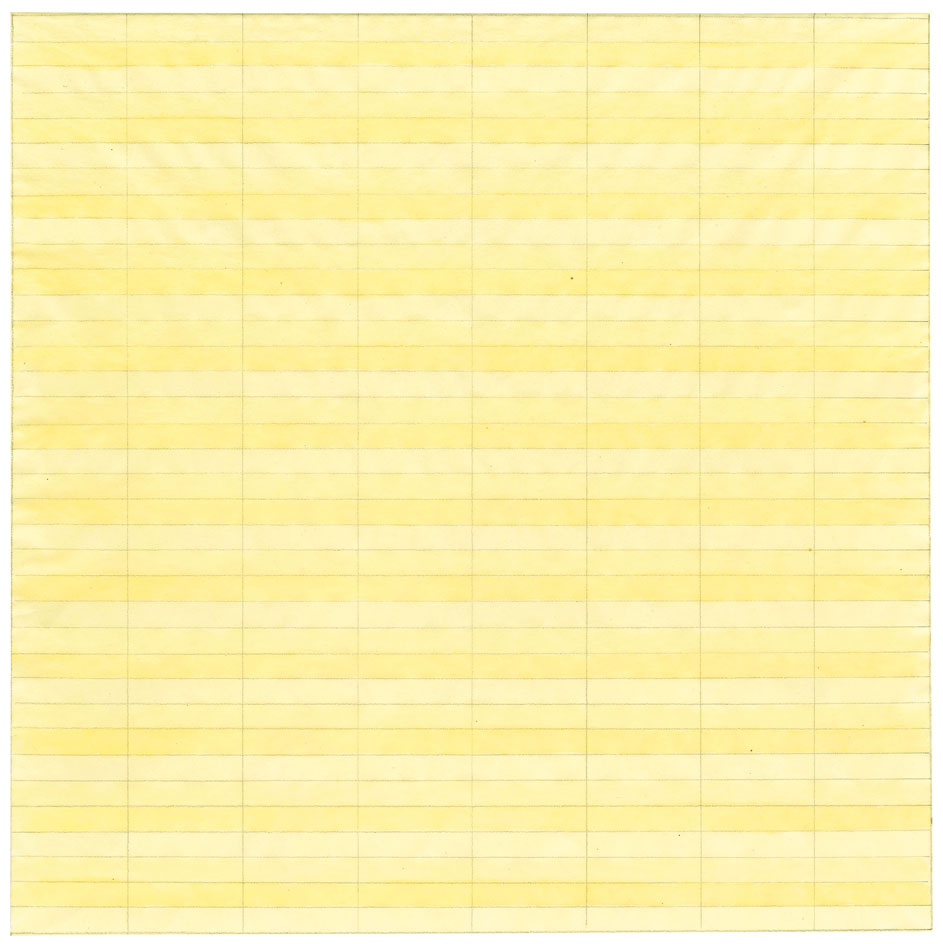
'Untitled' (1977) demonstrates both pencilwork and painting, highlighting the experimental nature of Martin's work. The concern to achieve perfect geometry is also present here.
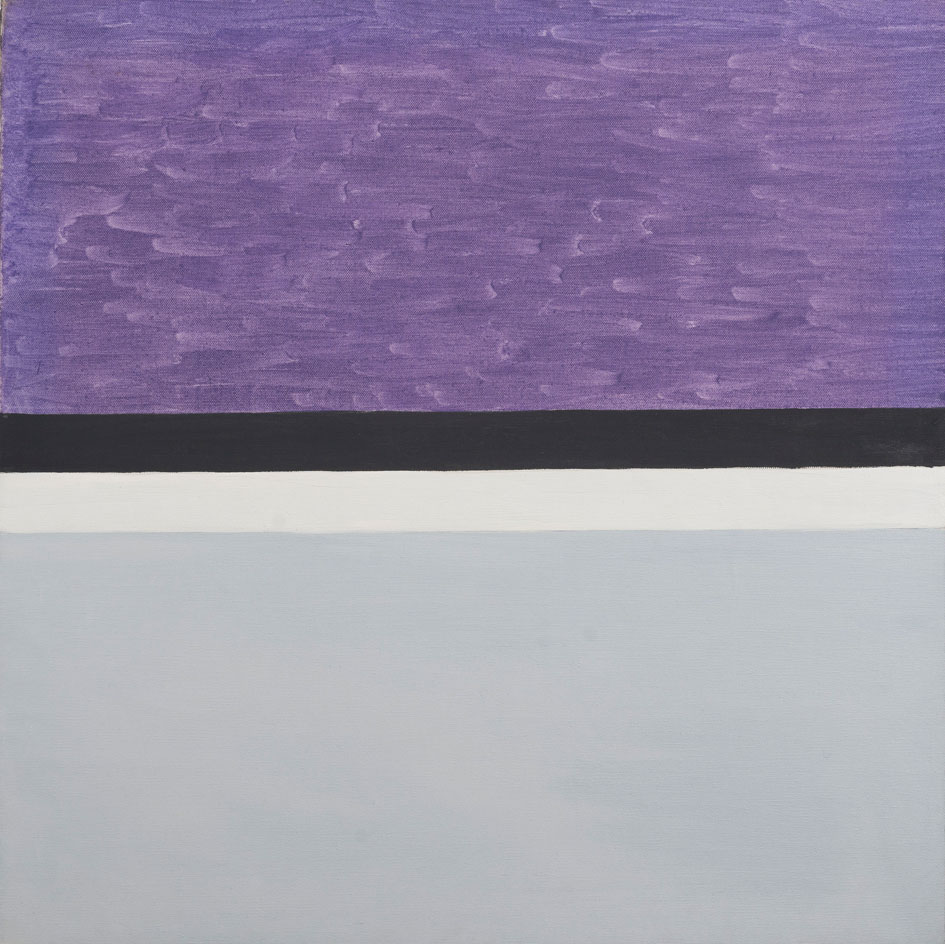
Martin's 1959 Untitled painting clearly plays with the notion of texture, as the thick black and light grey lines separating the larger planes of the painting seem to simultaneously demarcate a technical change in the action of painting. Indeed, the former violet part seems rough, raw and fragmented whereas the latter grey portion appears to apply a fluid brushstroke.
Wallpaper* Newsletter
Receive our daily digest of inspiration, escapism and design stories from around the world direct to your inbox.
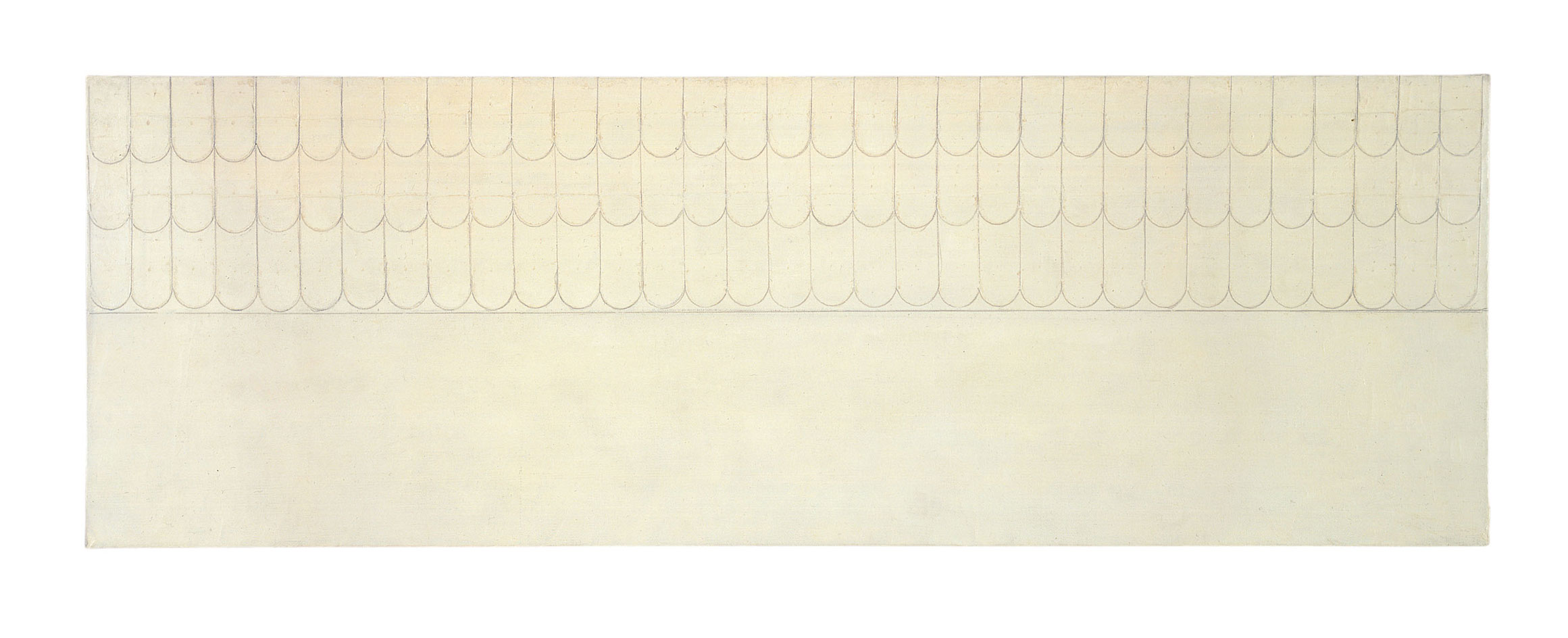
The Heavenly Race (Running) c.1959, is composed of two distinctive halves: the upper half portrays elongated circular drawings while the second half is empty. This abstract representation of 'running,' as expressed by Martin's title, pokes our imagination and forces us to go beyond mere representative and pictorial reality.
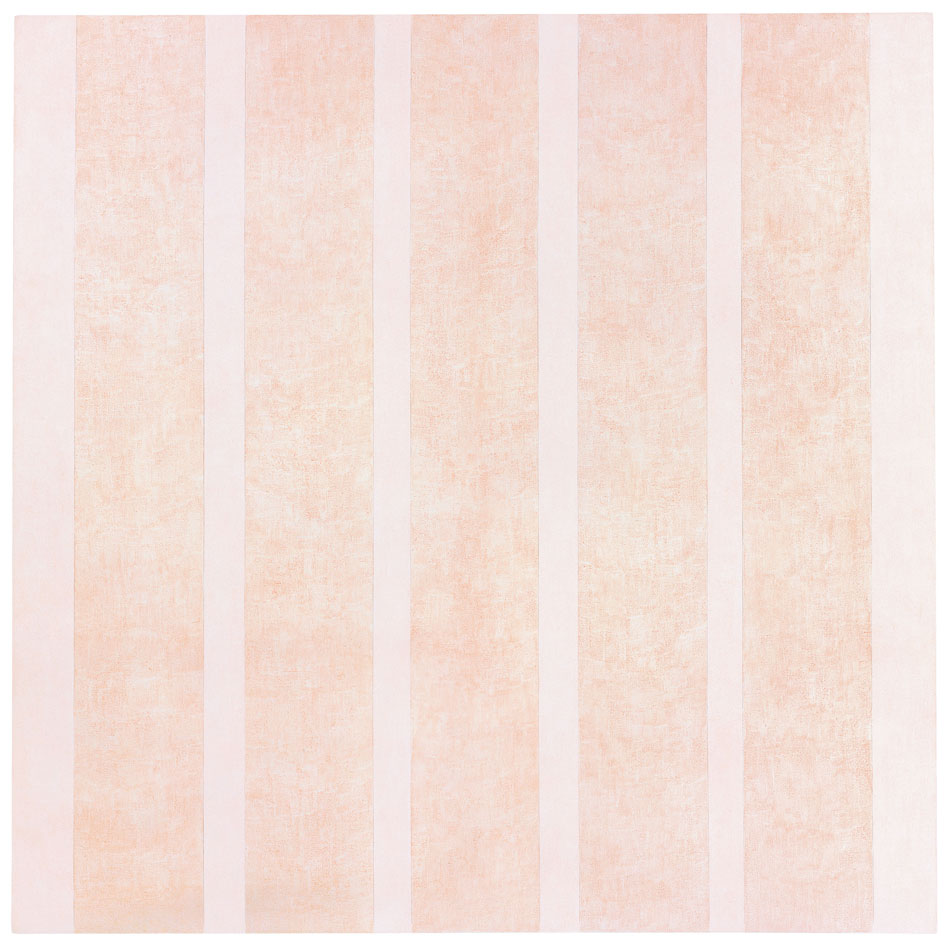
Untitled #10, created in 1975, once again demonstrates Martin's technique and dual use of materials. The light pink and orange planes, in unison, possess relaxing qualities and are subtle to the eye.
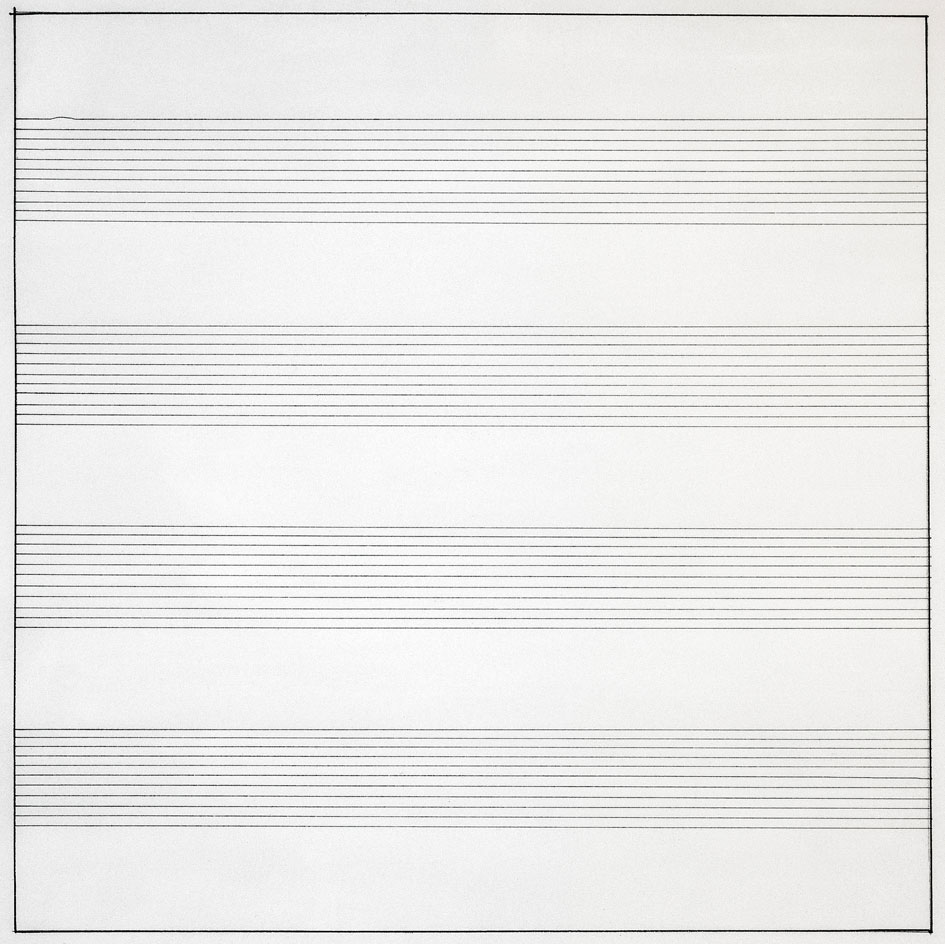
Martin's 1990 Untitled work resembles an empty music sheet, with similar black lines and separation marks.
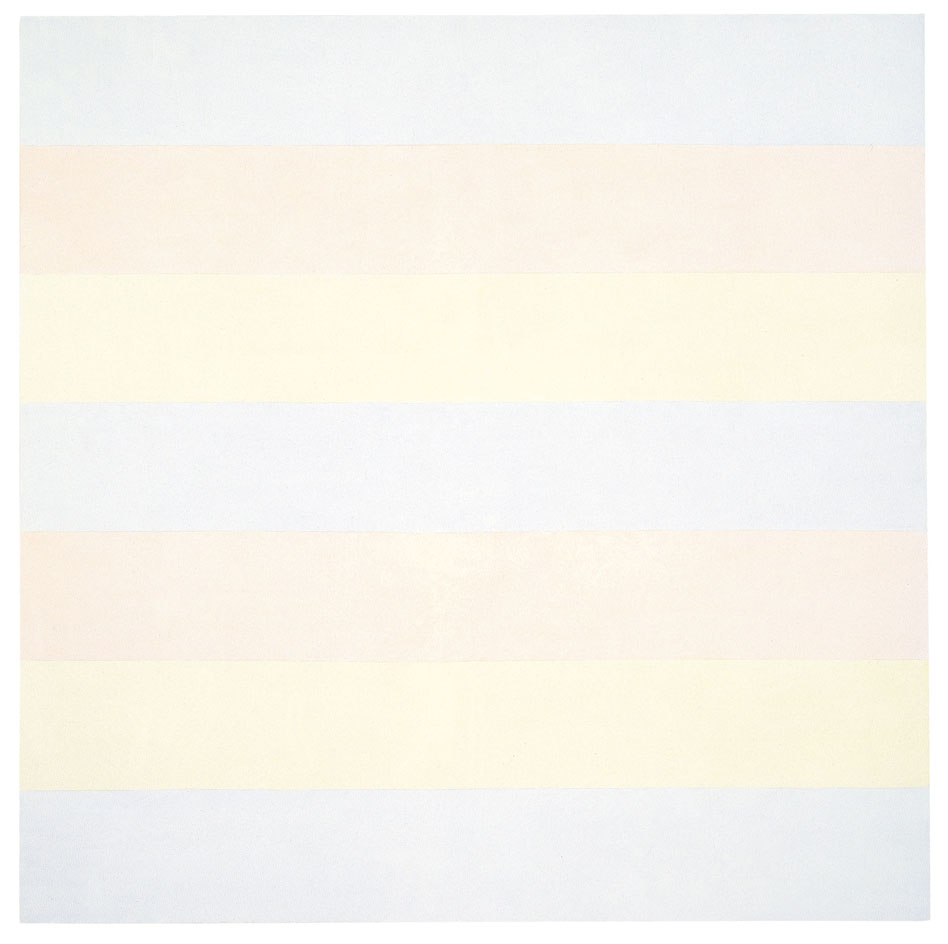
Untitled #5 1998, Kunstsammlung Nordrhein-Westfalen, Düsseldorf.
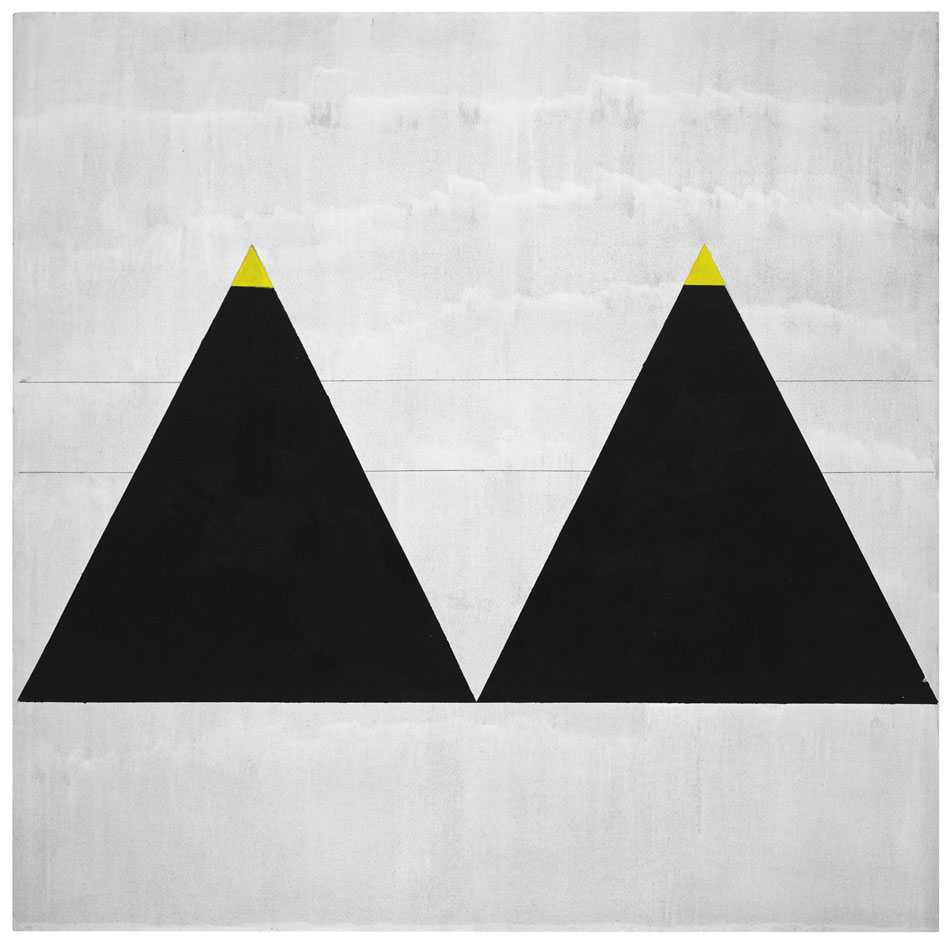
This special work, created in 2003, breaks Martin's traditional approach of ubiquitous horizontality. Here, two triangles are placed in the centre of the canvas, affirming their presence through the imposing colour black. The artwork now belongs to the Fondation Louis Vuitton in Paris.
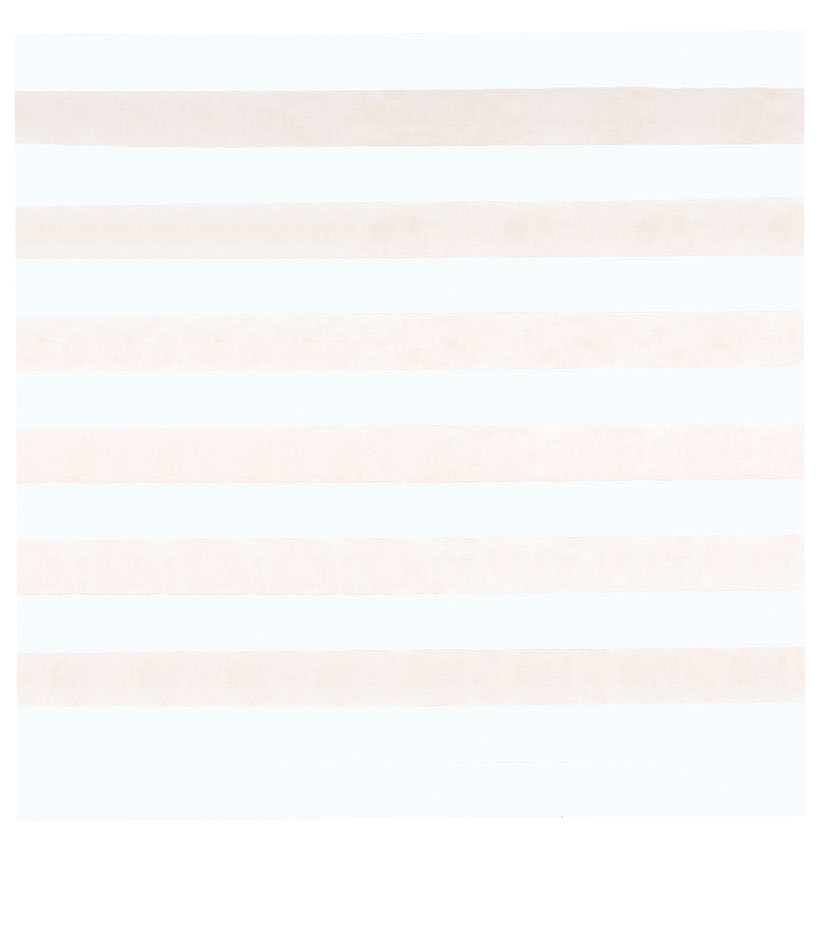
'Happy Holiday,' completed in 1999, alternates two rectilinear planes of light blue and peach, with seemingly identical dimensions and properties.
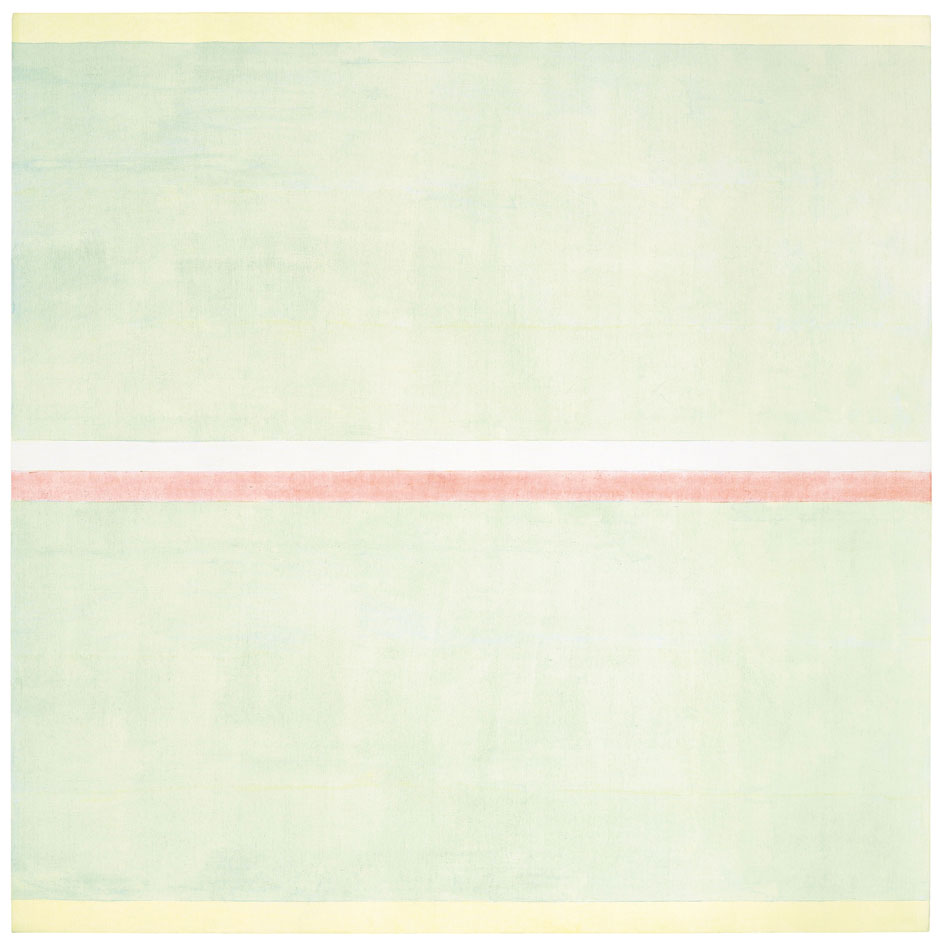
Gratitude 2001, Private collection.

Head and shoulders portrait of Martin at her house near Cuba, New Mexico, 1974. This phograph was taken after a seven-year period of nomadism Martin undertook, escaping the rambunctious city life by wandering numerous regions of the country in a pickup truck and camper.
ADDRESS
Tate Modern
Bankside
London SE1 9TG
-
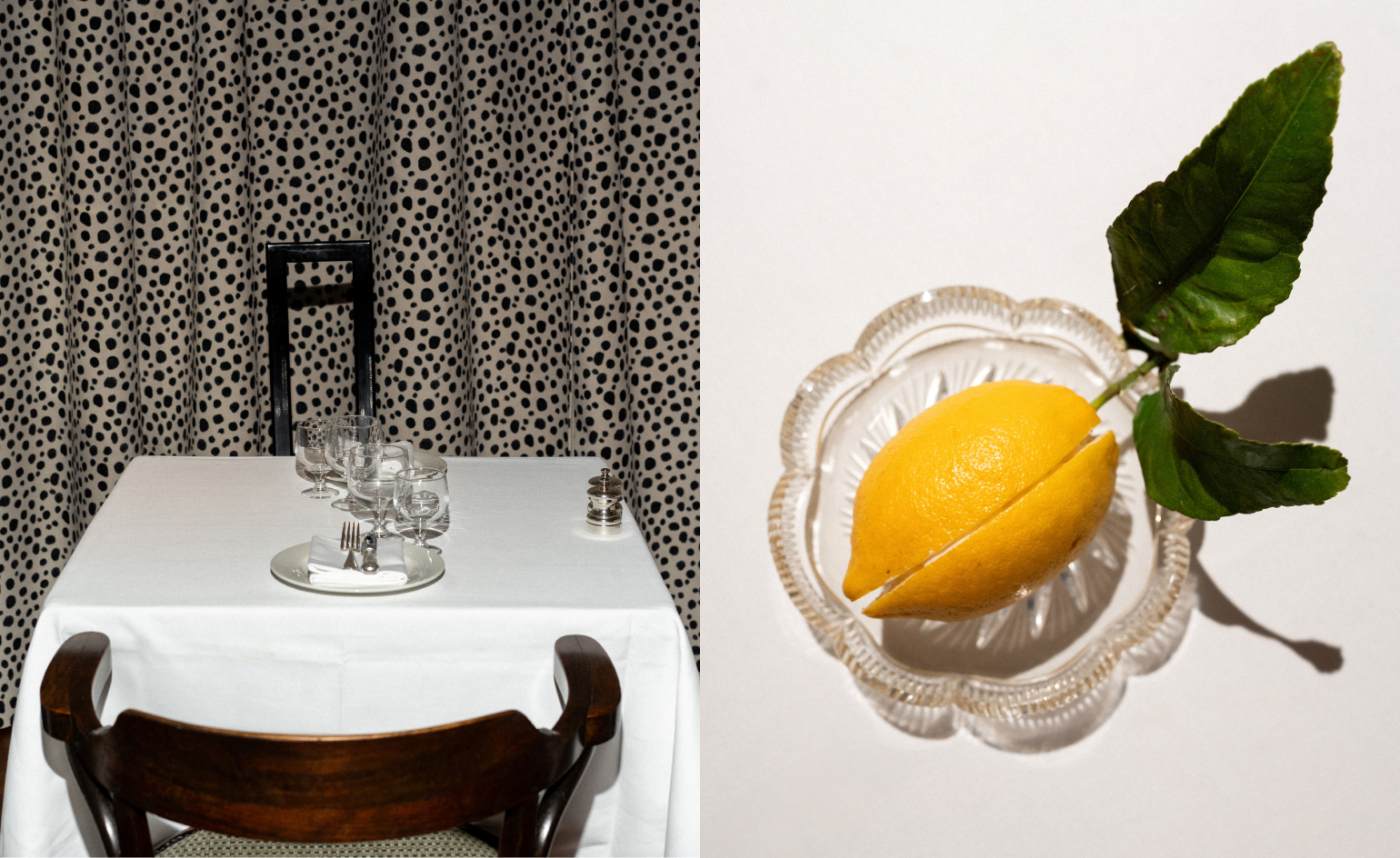 Marylebone restaurant Nina turns up the volume on Italian dining
Marylebone restaurant Nina turns up the volume on Italian diningAt Nina, don’t expect a view of the Amalfi Coast. Do expect pasta, leopard print and industrial chic
By Sofia de la Cruz
-
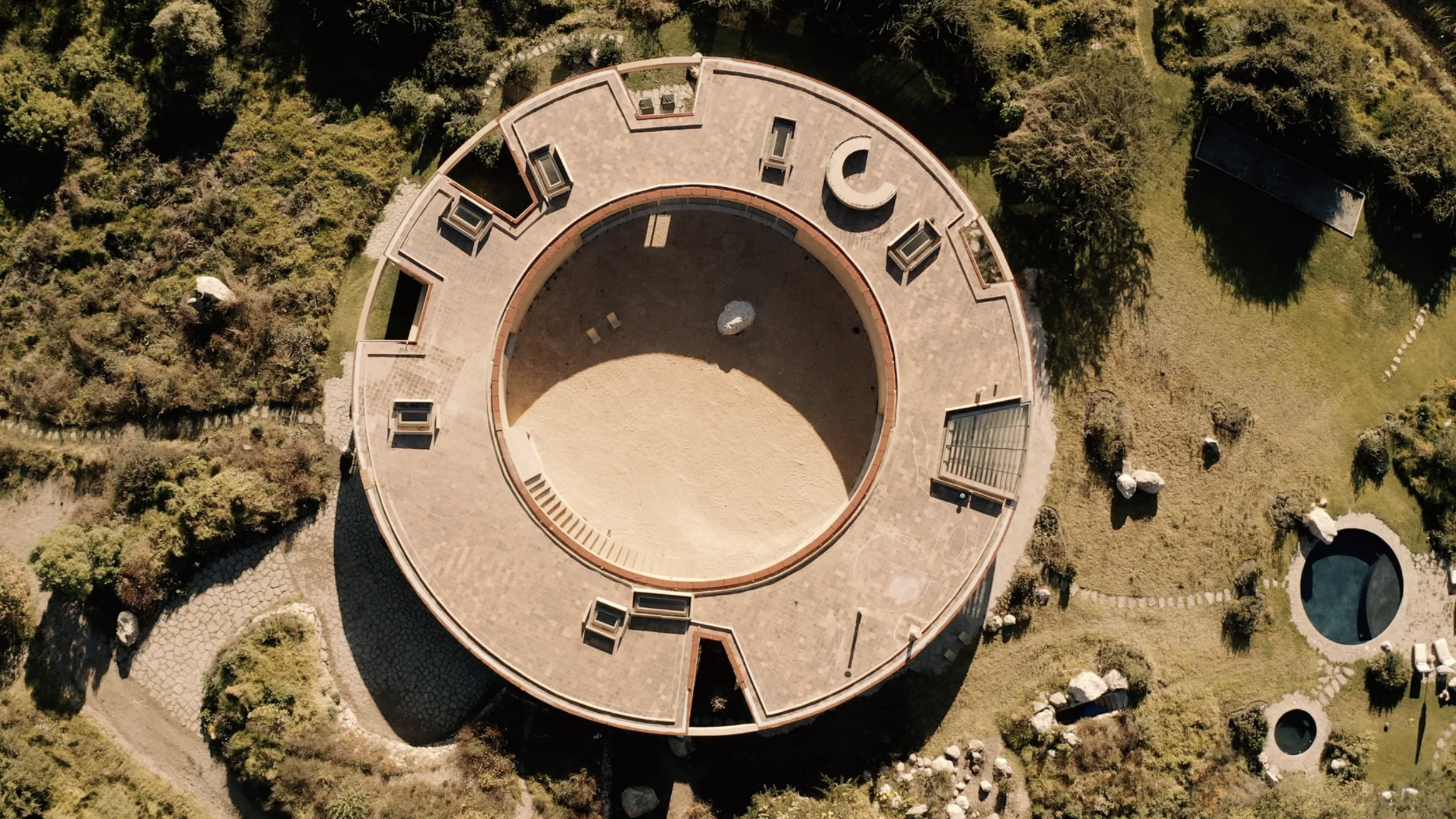 Tour the wonderful homes of ‘Casa Mexicana’, an ode to residential architecture in Mexico
Tour the wonderful homes of ‘Casa Mexicana’, an ode to residential architecture in Mexico‘Casa Mexicana’ is a new book celebrating the country’s residential architecture, highlighting its influence across the world
By Ellie Stathaki
-
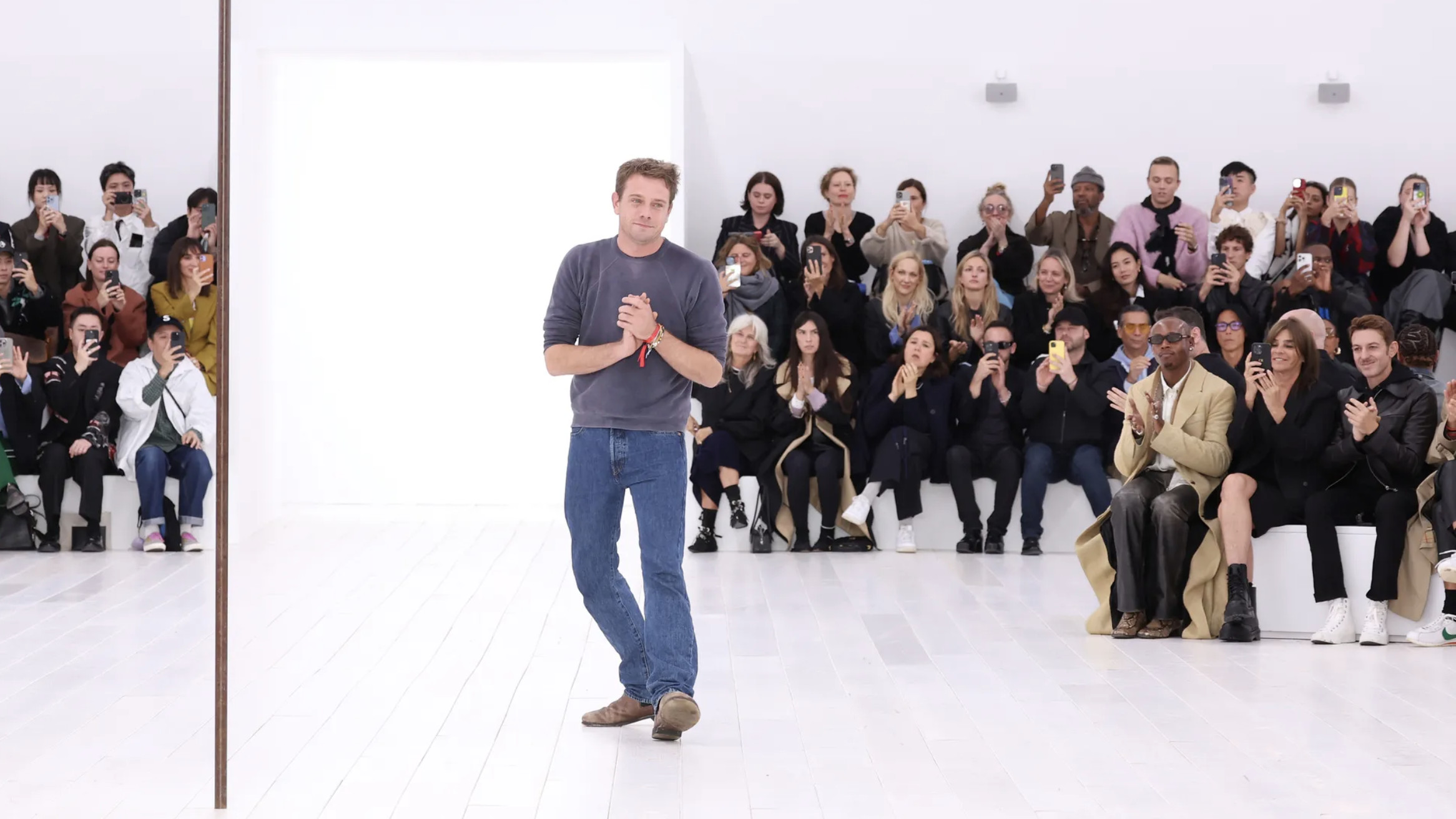 Jonathan Anderson is heading to Dior Men
Jonathan Anderson is heading to Dior MenAfter months of speculation, it has been confirmed this morning that Jonathan Anderson, who left Loewe earlier this year, is the successor to Kim Jones at Dior Men
By Jack Moss
-
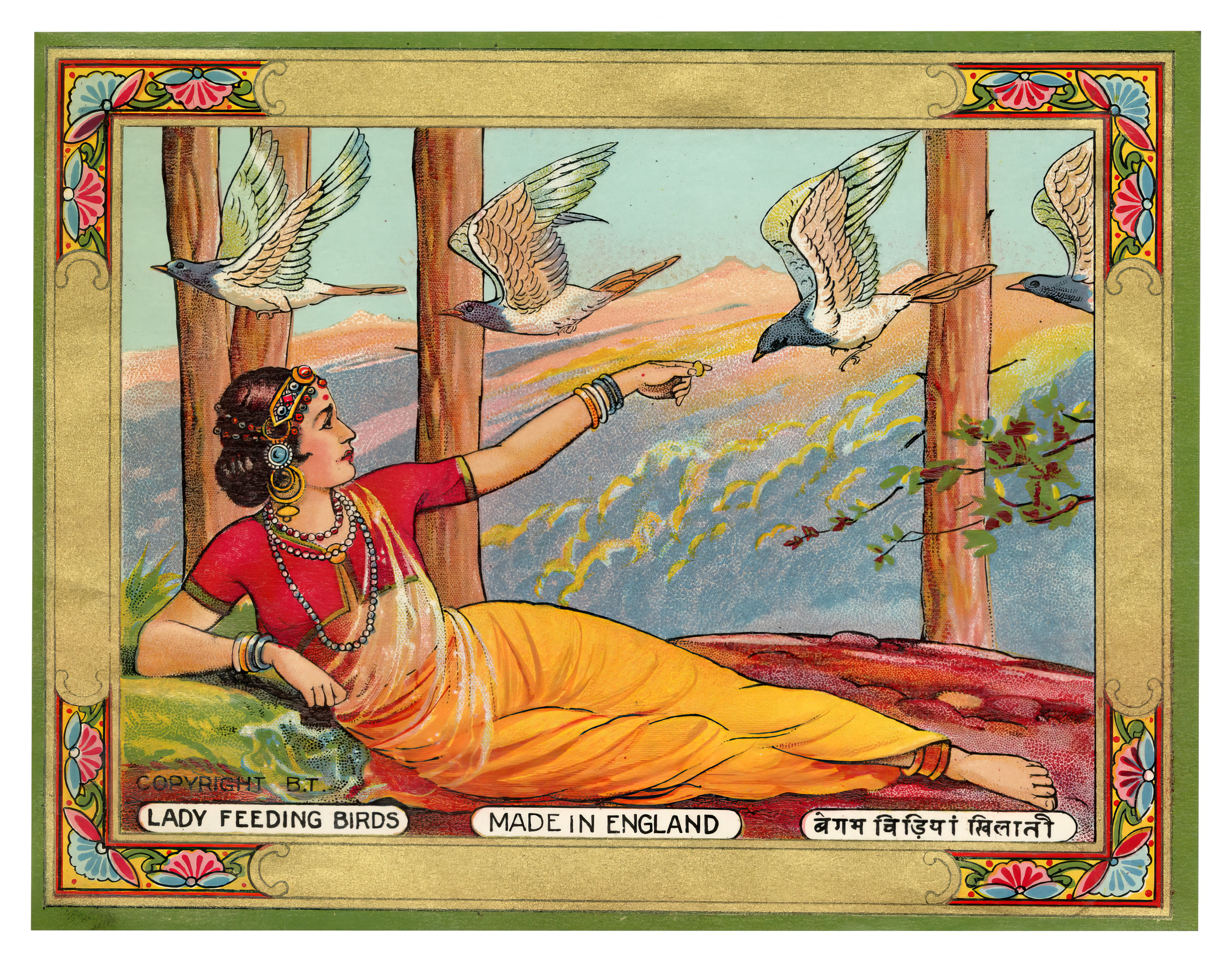 The art of the textile label: how British mill-made cloth sold itself to Indian buyers
The art of the textile label: how British mill-made cloth sold itself to Indian buyersAn exhibition of Indo-British textile labels at the Museum of Art & Photography (MAP) in Bengaluru is a journey through colonial desire and the design of mass persuasion
By Aastha D
-
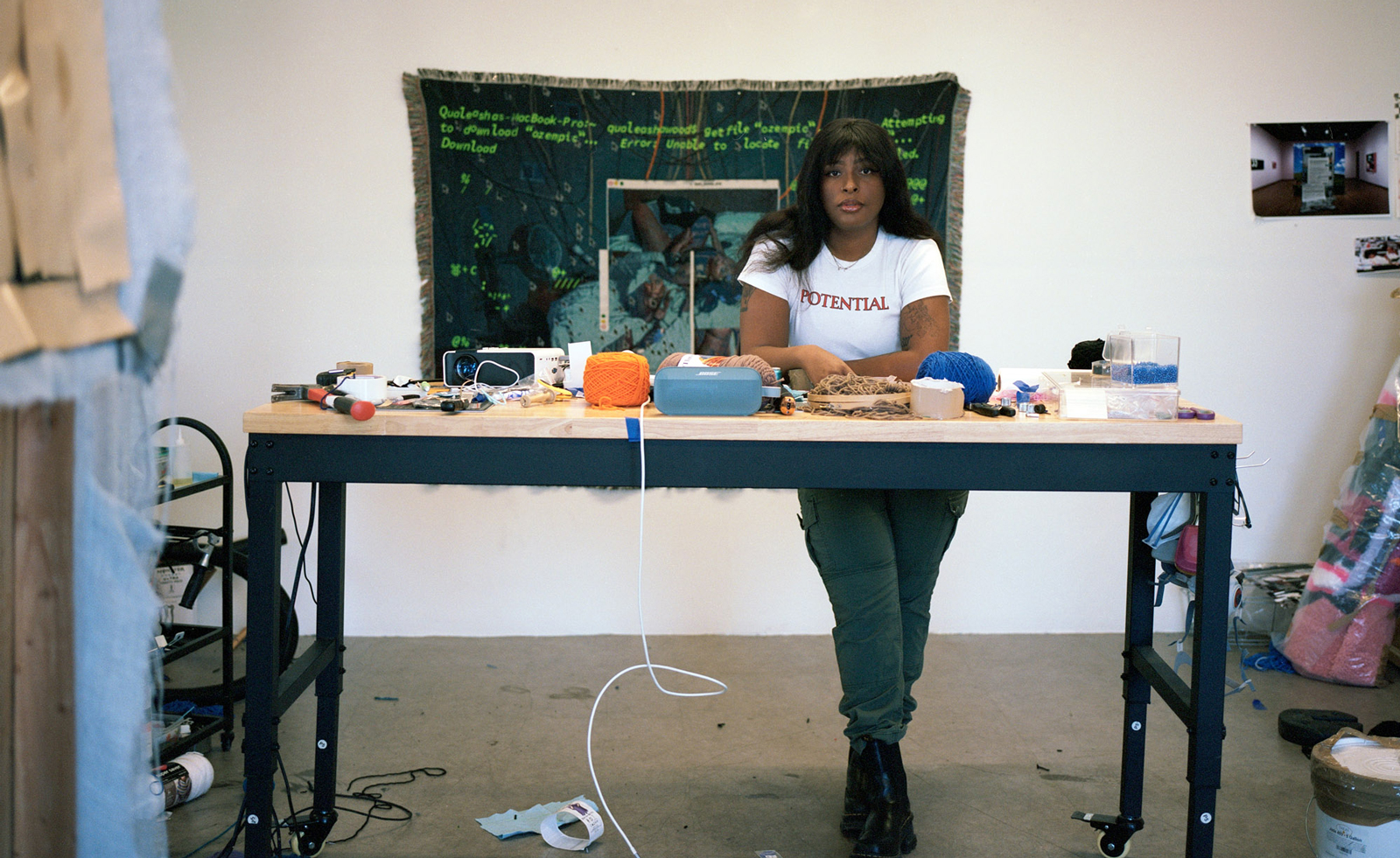 Artist Qualeasha Wood explores the digital glitch to weave stories of the Black female experience
Artist Qualeasha Wood explores the digital glitch to weave stories of the Black female experienceIn ‘Malware’, her new London exhibition at Pippy Houldsworth Gallery, the American artist’s tapestries, tuftings and videos delve into the world of internet malfunction
By Hannah Silver
-
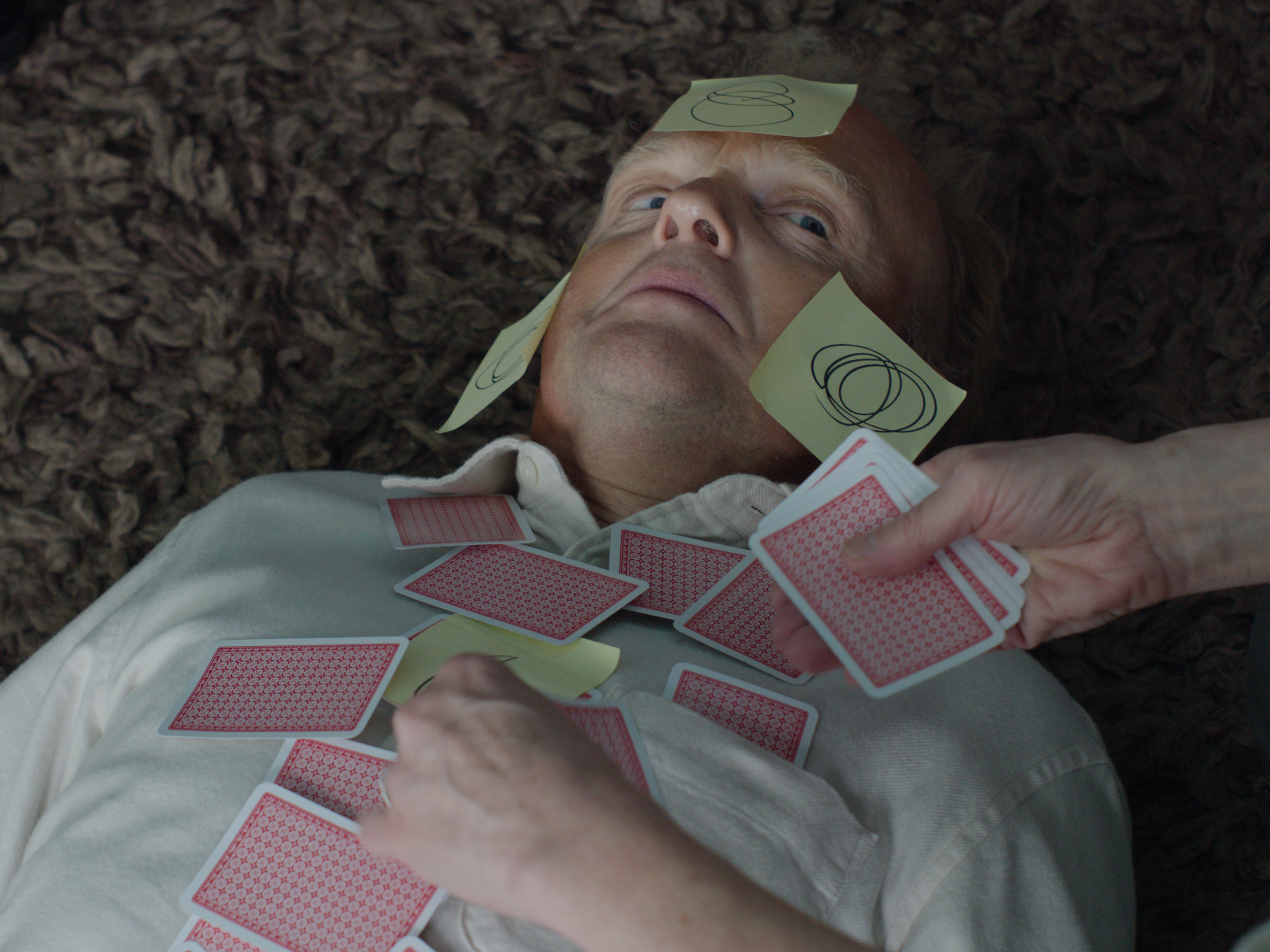 Ed Atkins confronts death at Tate Britain
Ed Atkins confronts death at Tate BritainIn his new London exhibition, the artist prods at the limits of existence through digital and physical works, including a film starring Toby Jones
By Emily Steer
-
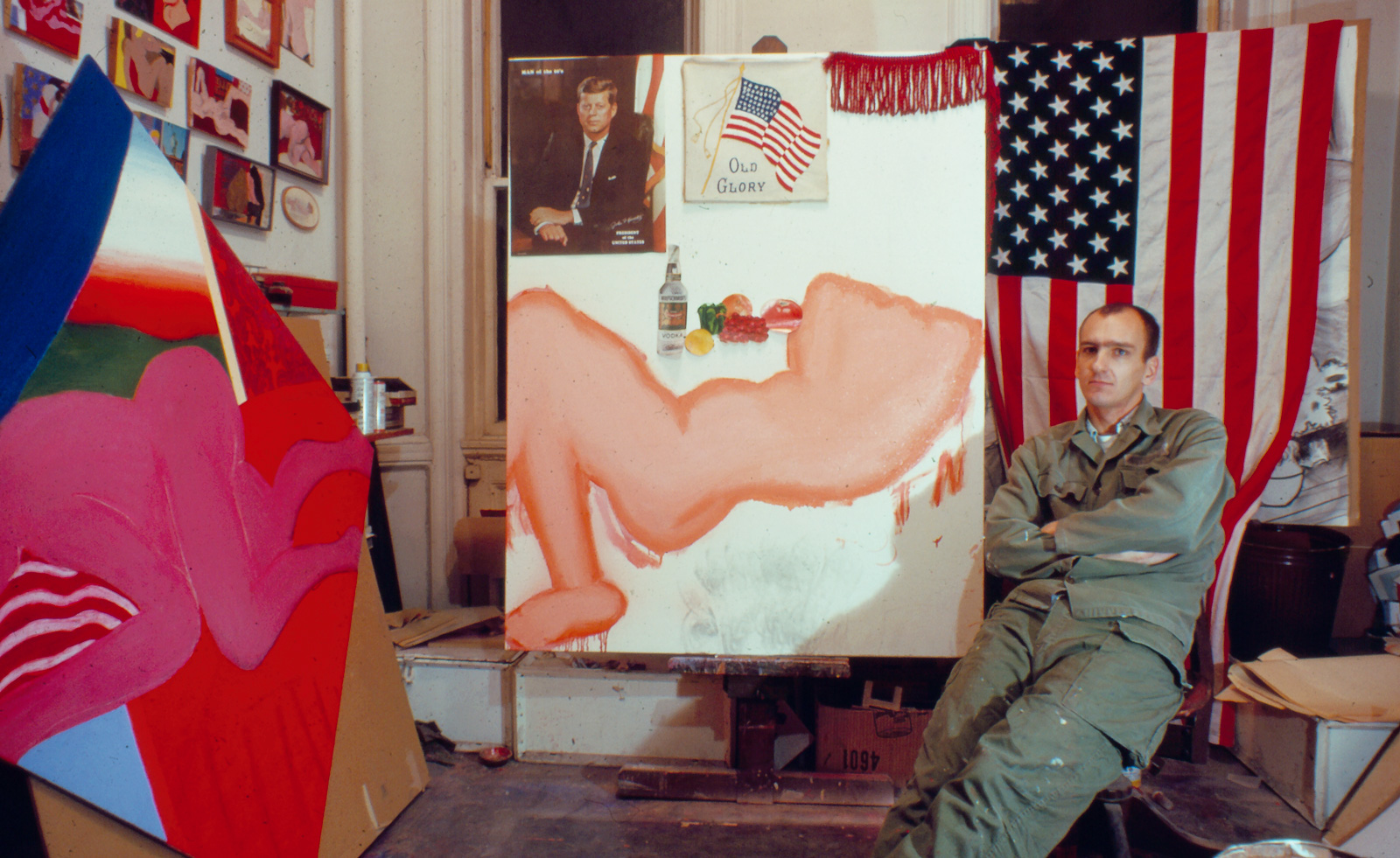 Tom Wesselmann’s 'Up Close' and the anatomy of desire
Tom Wesselmann’s 'Up Close' and the anatomy of desireIn a new exhibition currently on show at Almine Rech in London, Tom Wesselmann challenges the limits of figurative painting
By Sam Moore
-
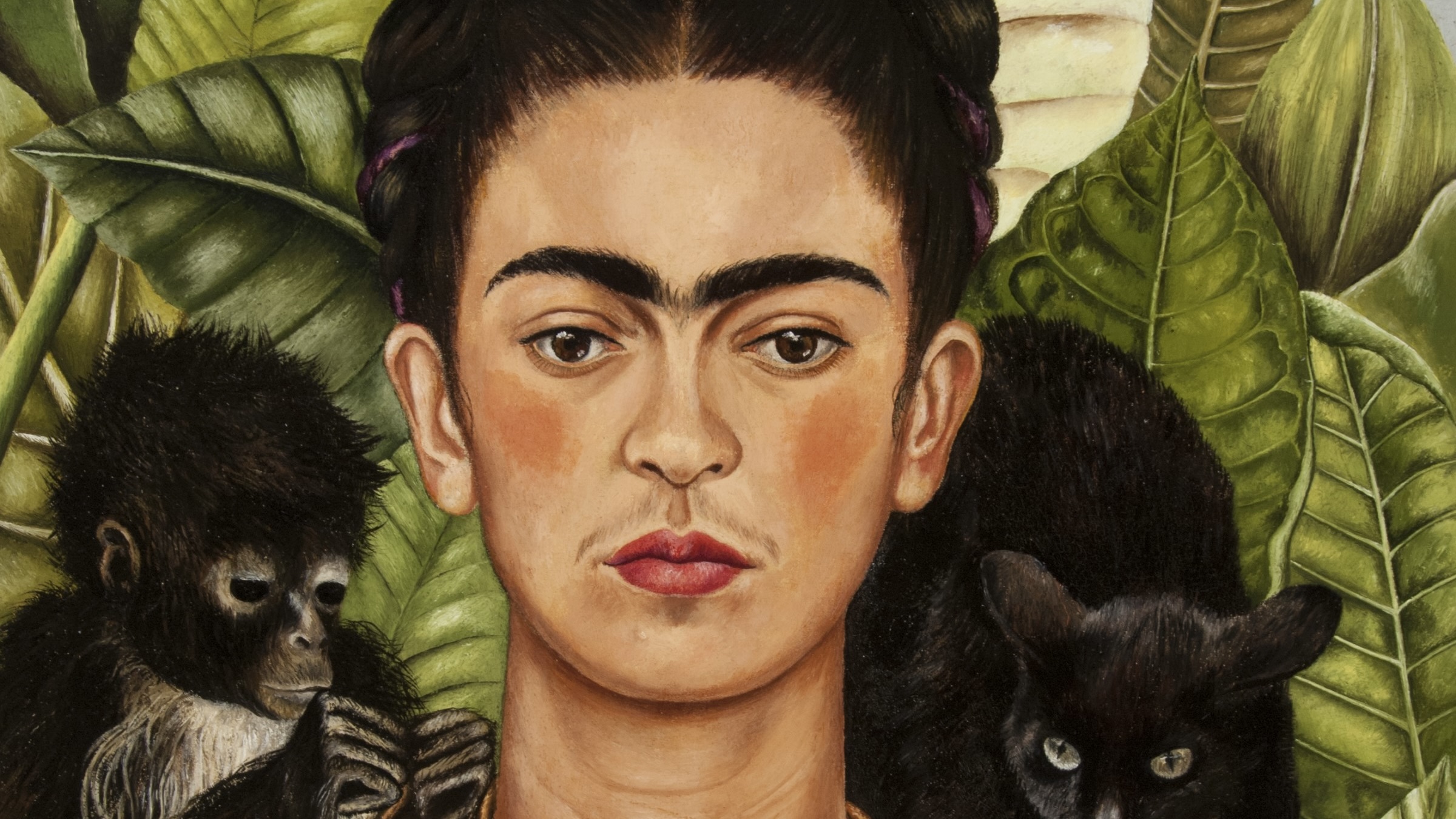 A major Frida Kahlo exhibition is coming to the Tate Modern next year
A major Frida Kahlo exhibition is coming to the Tate Modern next yearTate’s 2026 programme includes 'Frida: The Making of an Icon', which will trace the professional and personal life of countercultural figurehead Frida Kahlo
By Anna Solomon
-
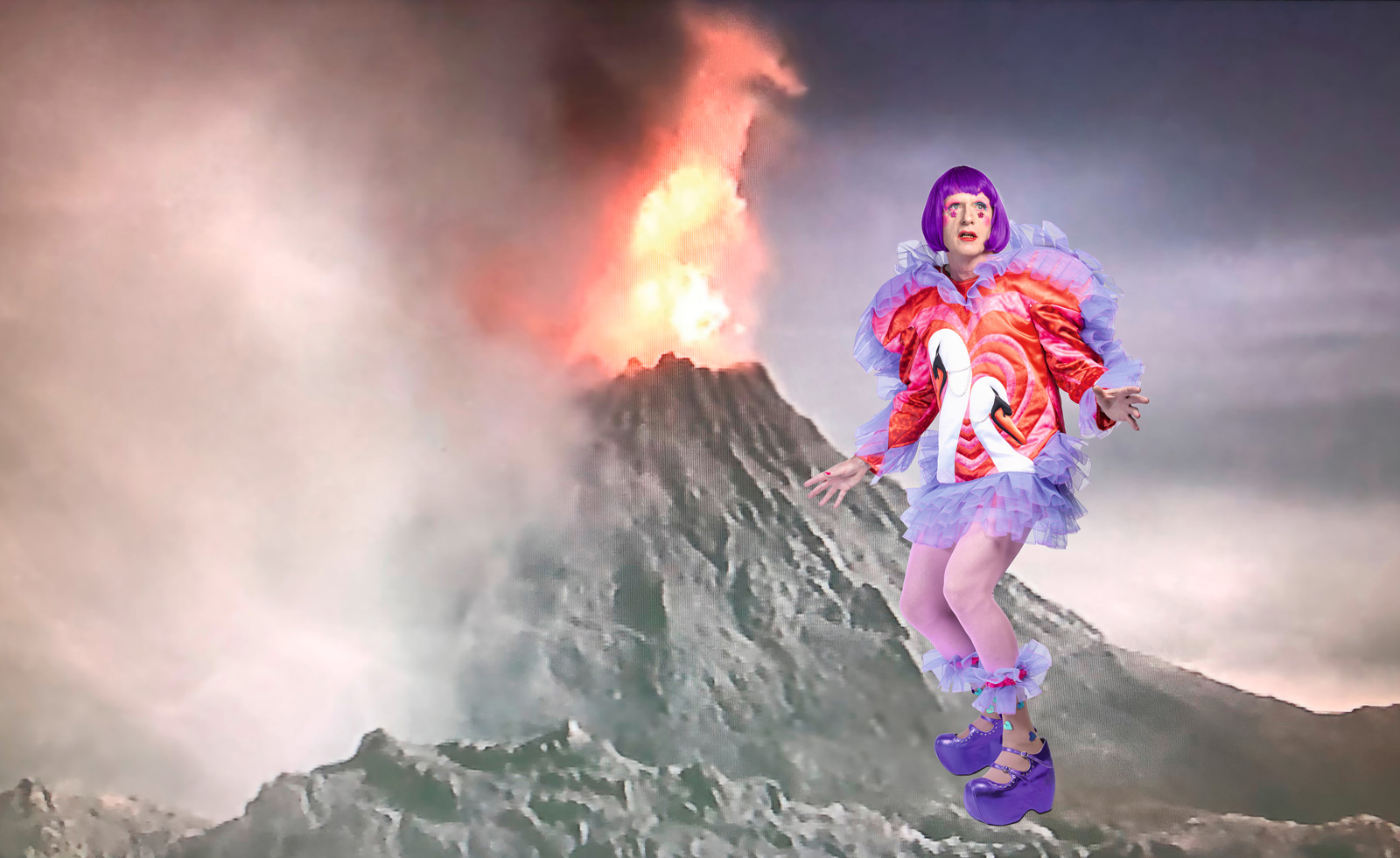 A portrait of the artist: Sotheby’s puts Grayson Perry in the spotlight
A portrait of the artist: Sotheby’s puts Grayson Perry in the spotlightFor more than a decade, photographer Richard Ansett has made Grayson Perry his muse. Now Sotheby’s is staging a selling exhibition of their work
By Hannah Silver
-
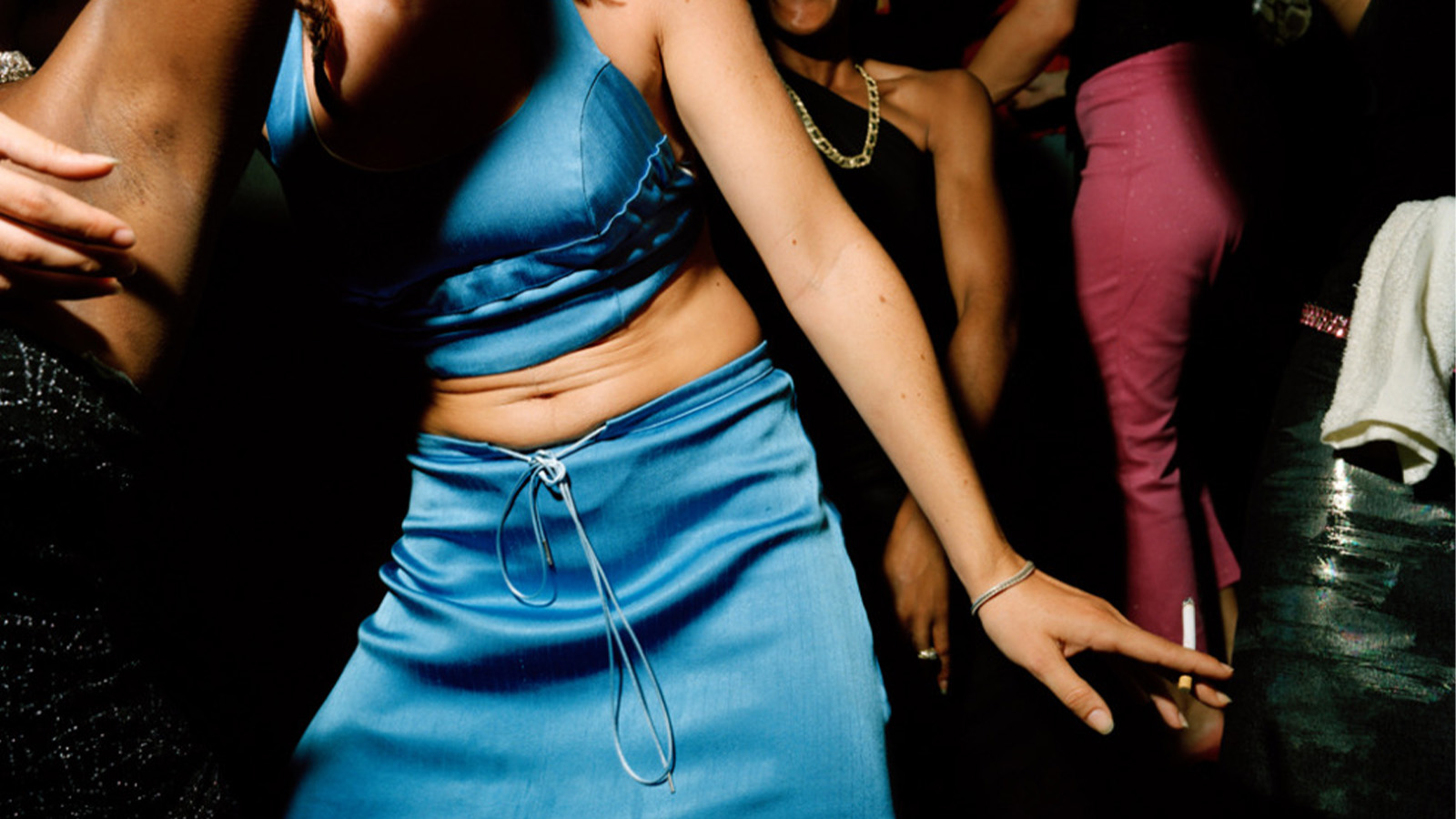 From counter-culture to Northern Soul, these photos chart an intimate history of working-class Britain
From counter-culture to Northern Soul, these photos chart an intimate history of working-class Britain‘After the End of History: British Working Class Photography 1989 – 2024’ is at Edinburgh gallery Stills
By Tianna Williams
-
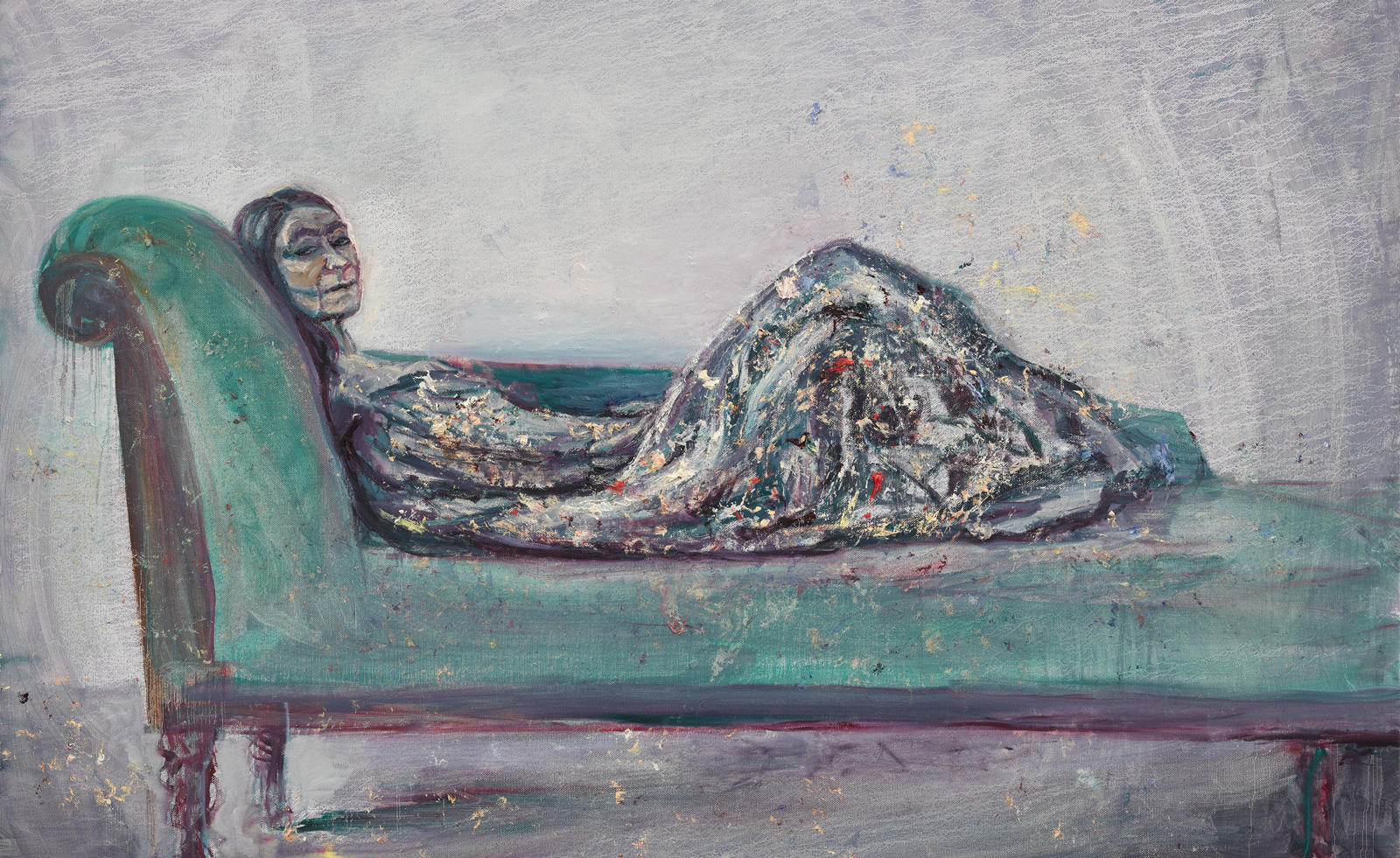 Celia Paul's colony of ghostly apparitions haunts Victoria Miro
Celia Paul's colony of ghostly apparitions haunts Victoria MiroEerie and elegiac new London exhibition ‘Celia Paul: Colony of Ghosts’ is on show at Victoria Miro until 17 April
By Hannah Hutchings-Georgiou